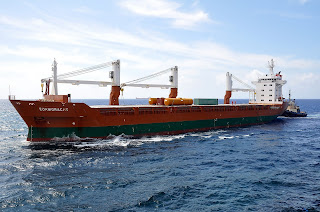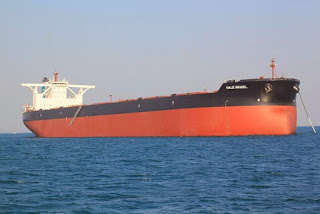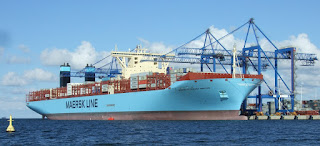Dry cargo vessels are ships that carry dry cargo such as boxes, bales, bags, or lumber, which is normally hand-stowed. These vessels are not precautious due to the fact that they carry dry goods. Dry goods are not temperature conscious. It also has on-deck cranes and other mechanisms for the loading and unloading of goods.
Dry cargo vessels Types
Roll-on/roll-off (RORO or ro-ro) Vessels
RORO ships are vessels designed to carry wheeled cargo, such as cars, trucks, semi-trailer trucks, trailers, and railroad cars. These vessels have either built-in or shore-based ramps which make the cargo be easily rolled on and off the vessel when in port without causing any damage to the goods. There are various types of ro-ro vessels such as ferries, cruise ferries, cargo ships, and barges.
 |
| Source worldmaritimenews.com |
Mark V class, being the world’s largest ro-ro with a cargo capacity of almost 1, 400,000 cubic meters and first begin its operation in the year 2011. It was also named as ‘Ship of the Year 2011’. Each Mark V Class vessel measures over 260 meters lengthwise with a width of slightly over 32 meters and a draft of about 11 meters. It truly is magnificence for what it was cut out for.
General Cargo Vessels/ Break Bulk Cargo
 |
| Source: |
General cargo vessels are designed to handle break-bulk cargo such as bags, cartons, cases, crates, and drums, either individually or in unitized or palletized loads and move packaged merchandise from one location to another. These cargos have its own cranes and other heavy lifting machinery needed in loading and unloading of goods. Generally, they carry cargo that is too large to be carried in a container.
Bulk Carrier/ Bulk Freighter or Bulker
A bulk carrier is a merchant ship specially designed to transport unpackaged bulk cargo, such as grains, coal, ore, and cement in its cargo holds. Bulk carriers could be identified by how it was built mainly from the construction of the cargo which was divided into separate cargo holds and covered hatches.
It was known to identify goods carried through abbreviations to describe bulkers. "OBO" describes a bulker which carries a combination of ore, bulk, and oil, and "O/O" is used for combination oil and ore carriers. The terms "VLOC," "VLBC," "ULOC," and "ULBC" for very large and ultra large ore and bulk carriers were adapted from the supertanker designations very large crude carrier and ultra large crude carrier.
 |
| Source: |
MS Ore Brasil previously known as Vale Brasil is a very large ore carrier with an overall length of 362.0 meters (1,187.7 ft), making her one of the longest ships currently in service owned by Brazilian Mining Company Vale.
Container Vessels
Container ships are cargo ships that carry all of their load in truck-size intermodal containers, in a technique called containerization. These ships load and unload their cargos through gantry cranes which move the containers straight between the vessel and the truck, removing the need for a warehouse.
 |
| Source: Wikipedia |
The Maersk Triple E class container ships comprise a family of very large container ships (more than 18,000 TEU). The name "Triple E" is derived from the class's three design principles: "Economy of scale, Energy efficient and Environmentally improved". These ships are expected to be not only the world's longest ships in service but also the most efficient container ships per twenty-foot equivalent unit (TEU) of cargo.
This article is brought to you by: Metro Combined Logistics Solutions Inc







In this dynamic and competitive business environment, demand forecasting which is directly impacted by the accuracy of sales forecast is highly challenging.
ReplyDeleteTop International Freight Forwarder in India